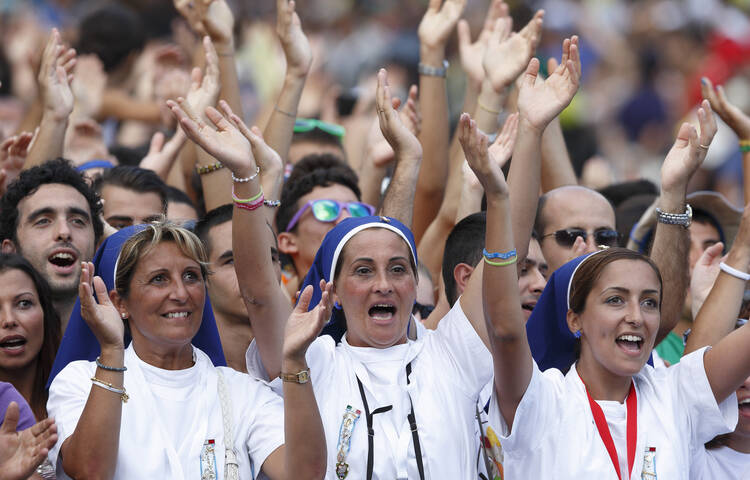Among many encouraging passages from the interview of Pope Francis published yesterday in America, my interest lingers on one of the pope’s metaphors for the Church.
The “thing the church needs most today,” said Pope Francis, “is the ability to heal wounds and to warm the hearts of the faithful; it needs nearness, proximity. I see the church as a field hospital after battle.”
I contemplate this metaphor as a theology teacher, as someone who tries to present the faith to skeptical, questioning teenagers. And in that capacity, I am deeply grateful for the language the Pope has chosen, for he has offered an image of the Church that is not only scripturally rich (cf. Mk 2:17) but one that resonates with nonbelievers and those searching for a spiritual home.
When it comes to handing on the faith, images and first impressions are crucial. Catholic schools have the responsibility not only to present the faith so that it is reasonable, but also so that it’s compelling. I am asked to teach the faith so that students not merely accept its truths, but desire them. And not merely the ideas, but their practice– the prayers, the Mass-attendance, the sacramental imagination, the embrace of the Cross, conversion and much more.
Consider how that varies from the teaching of other subjects. We don’t expect biology teachers to form biologists. We don’t expect history teachers to create historians. It is enough, in those subjects, to offer the material for intellectual mastery and nothing more. If students graduate and never again want to write up a lab report, the Catholic school does not fault the science department. We wouldn’t say it failed in its mission.
But it’s quite different when it comes to theology and to faith. A theology teacher assumes a more difficult and delicate task. Because our vocation involves reception plus integration, orthodoxy and orthopraxy, we have to be careful not to alienate. In our desire for completeness of belief, we cannot forget to provide the foundation for teachings (particularly moral teachings) that students might find impossible or severe. Moreover, before we teach anything, we have to understand our students – the experiences that formed them and the questions they carry.
Let me be clear: this does not mean we ignore challenging truths or dilute the Gospel. Eventually, students will have to respond to the choices at stake. But the order and the manner in which we present these truths and choices matter a great deal. We are obligated to proceed with both confidence and caution.
This is the context with which I gratefully greet the pope’s remarks. I read his concerns not as primarily about the substance of Church teaching, but about the delivery of that teaching. He has called the world’s attention to the kinds of questions that theology teachers and Catholic schools face implicitly every day: with compressed time and limited attention spans, what will you say about Christianity? In a room of skeptics and seekers, what will you articulate about the decision to follow Jesus of Nazareth? If, as John Paul II wrote, the Gospel is “the name for that deep amazement at man’s worth and dignity,” how will you express that amazement?
We might think of it this way: For an audience that possesses little to no religious formation, for an audience that might have had a bad experience with religion, what image of the Church is more convincing: a Church identified with the story of the Good Samaritan or a Church identified with its position on contraception?
Someone might say, “that depends,” and he or she is right. I would not speak for everyone. Different elements appeal to different people depending upon many factors. However, in my conversations with students and with others who are struggling to make sense of the Church, the image of the Good Samaritan is far and away more compelling – and, for that matter, a more effective avenue into the broader, more demanding aspects of the faith.
Once students realize that God is a God of radical compassion, once students see that Christianity is fundamentally about a relationship with an ultimate love who wants their freedom and flourishing, they are far more inclined to hear about selling one’s possessions, taking up one’s cross or resisting temptation. They are far more receptive to the Church’s position on the moral questions that Pope Francis named in his interview.
Ultimately, of course, there is no formula for evangelization. There is no manual that applies once and for all. All of us who teach are asked to witness to the Gospel, to the one who said, “I came so that they might have life and have it more abundantly.”
In the Pope’s words yesterday, I sense that life. I hear that abundance.








